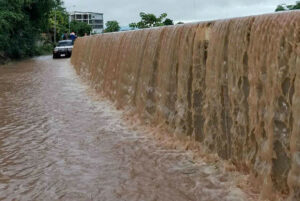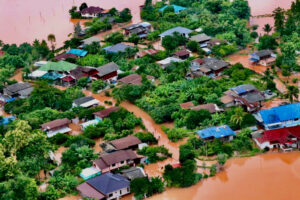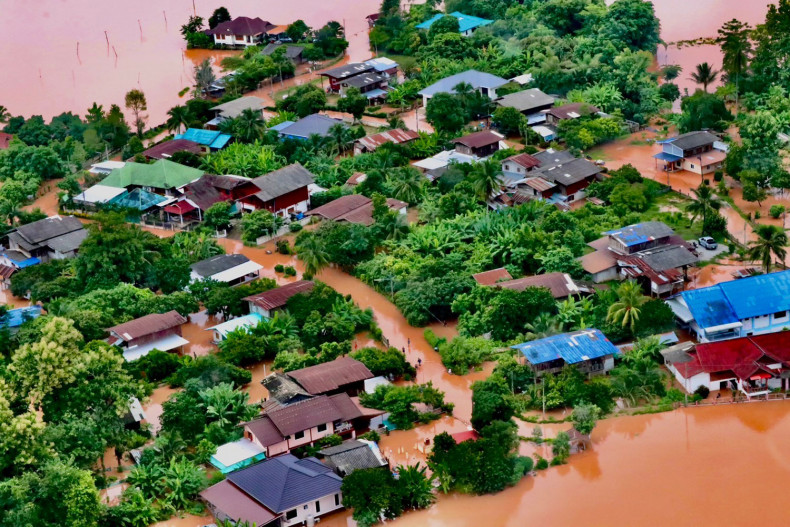
Government revisits six trillion baht flood project to combat Thailand’s persistent flooding and drought
Yingluck-era scheme will be worth it: DPM
A water management project initiated by Yingluck Shinawatra may be revived at a cost of six trillion baht in a bid to combat persistent flooding and drought, Caretaker Deputy Prime Minister Phumtham Wechayachai said.
He said the issue is a national priority, so a major investment is required to tackle the problem.
“The matter was first raised by the Yingluck government. In 2011, a budget of 2–3 trillion baht was set aside for the project. Now, it will cost about 5–6 trillion to carry out the project,” Mr Phumtham said
“It is a substantial sum of money, but it will be worth it in the long term.”
He made the remarks during a visit to the northern province of Nan, where he inspected flood relief operations and provided supplies for flood victims.
“Prime Minister Paetongtarn [Shinawatra] is concerned for the flood victims, and she is frustrated that there is nothing she can do to help them pending the formation of a new government. The caretaker government is now doing everything in its power to help,” Mr Phumtham said.
Once the new government assumes office, the water management project will be presented for consideration, he said.
Last week, former prime minister Thaksin Shinawatra told a local forum the new government needs to undertake a number of “megaprojects” during the rest of its term, especially to address the country’s chronic flooding and drought problems.

As of Sunday, floods were still reported in five provinces in the North, namely Chiang Rai, Nan, Phayao, Phetchabun and Phrae, according to the Department of Disaster Prevention and Mitigation (DDPM).
Between Aug 16 and 22, floods claimed the lives of 22 people — 13 of whom were killed in Phuket. The inundation has affected 22 provinces, displacing 30,807 families across the country.
Chaovalit Gunkham, an assistant governor of the Electricity Generating Authority of Thailand (Egat), said even though the floods in the North have receded in some areas, Egat will keep an eye on water levels across the country’s major river basins.
As of Sunday, the Sirikit Dam in Uttaradit province, one of the main dams in the upper North, was about 70% full. It is still able to take in an additional 2.9 million cubic metres of run-off, Mr Chaovalit said.
The dam’s discharge rate has been reduced to 3 million cubic metres per day to prevent floods downstream and conserve water for the next dry season, Mr Chaovalit said.
Surasee Kittimonthon, secretary-general of the Office of the National Water Resources (ONWR), Sunday said persistent rain has caused water levels along the Mekong River to continue to rise, affecting many low-lying areas in the North and Northeast.
He said the ONWR has sent an emergency notice to the Mekong River Commission Secretariat (MRCS), requesting increased flood surveillance and daily reports from water stations in Chiang Rai, Loei, Nong Khai, Bueng Kan, Nakhon Phanom, Mukdahan, Amnat Charoen and Ubon Ratchathani.
In Sukhothai, the Yom River burst through its banks Sunday, inundating villages and farmland in Sawankhalok, Sri Samrong, Kong Krailat and Muang districts, with flood waters reaching as high as 50cm.
Sukhothai governor Suchart Theekhasuk ordered a relief operation centre to be set up to provide help to affected villagers.
With more rain still set to come, City Hall said it has already rolled out a number of measures to prevent run-offs from the North from causing widespread flooding in Bangkok.
Bangkok deputy governor Wissanu Sapsompol said City Hall is closely monitoring water levels along the Chao Phraya River and sharing the data with the Royal Irrigation Department, Centre of National Water Administration and ONWR.
“The flow [of the Chao Phraya River] through Ayutthaya’s Bang Sai district was not at a worrying level today. Run-off from Nan is expected to take about five days to arrive downstream, and we will know [the severity of the situation] two days in advance, when the water reaches Bang Sai,” Mr Wissanu said.
Mr Wissanu said officials had reinforced and increased the height of flood walls along the Chao Phraya with sandbags to prevent flooding. Manpower and resources such as sandbags and water pumps have been mobilised to flood-prone areas across the capital to enable quick response in emergencies, he said.
Source: https://www.bangkokpost.com/thailand/general/2853418/govt-revisits-b6tn-flood-project


